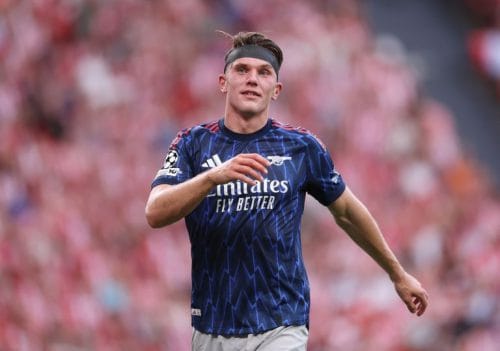 A recent fixture saw Arsenal conclude with a 2-2 draw against Sunderland at the Stadium of Light on 9 November 2025. This result has prompted considerable discussion regarding the performance of the squad and the implications of key player absences. The match provided several points for analysis beyond the immediate scoreline, particularly concerning tactical effectiveness and squad resilience. The encounter underscored specific challenges and highlighted unexpected strengths within the Arsenal framework, drawing attention to aspects of play that require meticulous examination. Despite dropping points, the broader context of the team’s current situation offers a different perspective on the outcome, as articulated in post-match assessments.
A recent fixture saw Arsenal conclude with a 2-2 draw against Sunderland at the Stadium of Light on 9 November 2025. This result has prompted considerable discussion regarding the performance of the squad and the implications of key player absences. The match provided several points for analysis beyond the immediate scoreline, particularly concerning tactical effectiveness and squad resilience. The encounter underscored specific challenges and highlighted unexpected strengths within the Arsenal framework, drawing attention to aspects of play that require meticulous examination. Despite dropping points, the broader context of the team’s current situation offers a different perspective on the outcome, as articulated in post-match assessments.
The Strategic Impact of Viktor Gyökeres’s Absence
One significant observation from the 2-2 draw against Sunderland was the palpable absence of Viktor Gyökeres. While his contribution to Premier League goal statistics may not have been immediately prominent, his overall role within the Arsenal team is considered profoundly central and instrumental. Analysts have frequently highlighted that the Swedish international provides a dynamic presence extending far beyond mere goal scoring. His playing style presents considerable difficulties for opposition defenders, who consistently struggle to contain his multifaceted attacking contributions. Against Sunderland, the lack of his specific attributes was acutely felt.
Gyökeres is recognized for his relentless and well-timed runs in behind defensive lines, a characteristic that stretches opposition formations and creates vital channels for teammates to exploit. His tenacious pressing from the front disrupts build-up play and forces turnovers, contributing significantly to Arsenal’s defensive strategies high up the pitch. Furthermore, his robust hold-up play allows the team to retain possession in advanced areas, bringing other attackers into the game effectively. The sharp link-up play he exhibits with fellow offensive players is a crucial component of Arsenal’s intricate attacking movements. All of these particular qualities, which define his ‘quietly pivotal’ influence, were conspicuously missed during the match at the Stadium of Light. In prior engagements against teams employing a compact, deep defensive block, Gyökeres has proven indispensable. His capacity to stretch the game vertically is paramount, as it generates the necessary space for other creative players to operate and exploit defensive weaknesses. The anticipation is that he will return to the squad following the upcoming international break, which would be a timely boost, especially with the North London Derby on the immediate horizon.
Arsenal Demonstrates Open-Play Scoring Ability
For an extended period, Arsenal has faced scrutiny and criticism from observers who frequently suggest a disproportionate reliance on set pieces to dismantle robust defensive setups. However, the recent fixture against Sunderland served as a compelling counter-argument to this prevailing narrative. In a match where Arsenal found themselves needing to recover a deficit and push for an equalizer, the decisive moments that led to their goals were a testament to individual flair and capability originating from open play sequences.
Bukayo Saka’s precise finish from a challenging, tight angle demonstrated remarkable skill and composure under pressure. Similarly, Leandro Trossard’s powerful, well-struck shot, described as a thunderbolt, was a product of sustained attacking play rather than a dead-ball situation. Both of these crucial goals were meticulously crafted and executed from open play, directly refuting the contention that Mikel Arteta’s squad exclusively depends on set-piece scenarios for offensive output. These instances effectively illustrated that set-piece proficiency is not a sole dependence for the team, but rather one component within a comprehensive tactical framework. Instead, set-piece opportunities are presented as one of several versatile tools at Mikel Arteta’s disposal, complementing the team’s ability to generate and convert chances through fluid, dynamic play. This demonstration underscored the offensive depth and varied threat Arsenal possesses, capable of producing moments of individual brilliance when the tactical circumstances demand it.
Evaluating the Draw: A Point Gained Amidst Injury Challenges
The 2-2 draw with Sunderland, while representing a concession of two potential points, is interpreted by some analysts as effectively a point gained when considered within its broader context. Arsenal is currently navigating a significant injury crisis, a situation that has impacted the team more severely than might be immediately apparent from external observation. The ability of the squad to maintain a competitive level and deliver performances despite these numerous absences stands as a profound testament to the inherent depth and collective resilience within the team.
The international break is anticipated to provide a much-needed respite, facilitating the return of several integral players. Martin Ødegaard, Viktor Gyökeres, Gabriel Martinelli, Noni Madueke, Kai Havertz, and Gabriel Jesus are all expected to rejoin the squad following this period. The reincorporation of these key individuals is projected to inject a substantial and timely boost into the team’s dynamics and capabilities. With the full complement of a strengthened squad, Arsenal is projected to be in a significantly improved position to recover form and achieve more favorable results in upcoming fixtures. This perspective suggests that maintaining parity in challenging circumstances, particularly with a depleted roster, is indicative of underlying strength and strategic planning that can yield greater success once key personnel are fully available. One supporter, identified as Reggie, commented on 9 November 2025 at 11:08 pm, stating, “Dont be happy with a one goal lead!!!!!” This remark reflects a sentiment among some fans regarding the team’s game management in leading positions.
